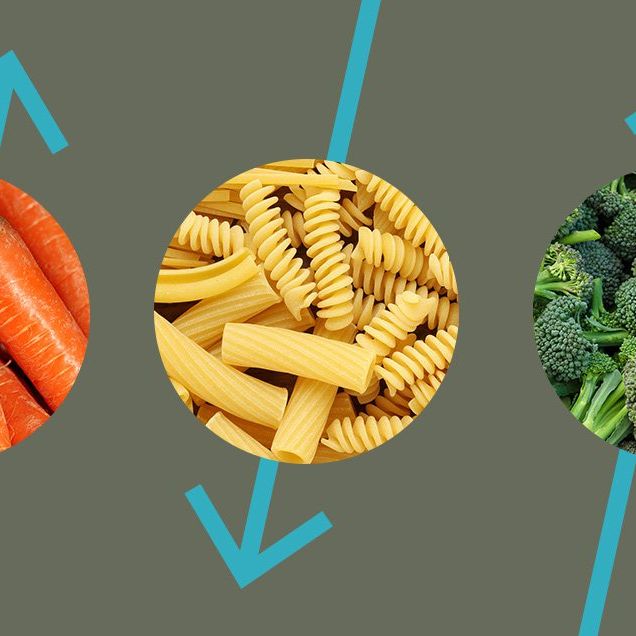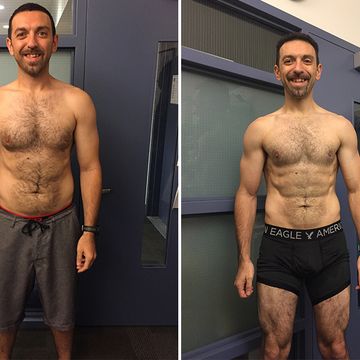Carbohydrates are one of the most confusing aspects of nutrition. I say this as a dietician who has helped countless clients lose weight. And I understand the confusion.
First you hear that you should eat fewer carbohydrates (or none at all!) and then you hear that you should eat more. On top of the mixed messaging, maybe you’ve even heard that you don’t actually eat carbohydrates, but you eat the foods that contain carbohydrates.
I’ll often hear from clients that the last time they “cut out all carbohydrates,” they lost weight, but then they got sick of eating spinach, broccoli, and strawberries. Here’s the thing: spinach, broccoli, and strawberries all contain carbohydrates!
The most common carbohydrate question I get from readers, clients, Uber drivers, etc., is this: “Should I stop eating [insert random carb-containing food]?” The answer is complex. So I created what I call The Hierarchy of Carbohydrates in my new Men’s Health book The MetaShred Diet to give readers, clients, and Uber drivers an easy-to-use cheat sheet. This chart shows that not all carbs are created equal.
A few key things you should take away from The Hierarchy of Carbohydrates.
- Foods at the bottom of the list are more carb- and calorie-dense. They generally contain fewer nutrients. As you move up the list, foods become less carb- and calorie-dense. They generally contain more nutrients.
- Eating foods from the top of the list will make you feel fuller than if you ate foods from the bottom of the list.
- You want to eat more foods from the top then you do the bottom. Try to reduce and/or eliminate foods and drinks from the bottom two positions at all times except for special occasion eating.
- If you need to further lower your carb (or calorie) intake for greater fat loss and better control of your blood sugar, then work to reduce and/or eliminate foods in the next group on the list. Adopting this approach to carb restriction will help you focus on nutrient-dense carbs.
- Never remove one of the carb groups from your diet if you are still eating foods from a group below it. For example, don’t cut out bagels from your diet if you are still eating cookies.
A little less confusing, right? So here’s how to use The Hierarchy of Carbohydrates. And for a more detailed 28-day eating plan designed to help you lost fat fast, check out The MetaShred Diet from Men’s Health.
Step 1: For one day, write down everything that you eat. Tip: Do this as the day progresses, not at the end of the day. (You’ll be much less accurate if you wait until the end.)
Step 2: Go through your food log and identify the carbs you are eating and where they sit in the hierarchy. This is as simple as writing the number in the hierarchy next to the food (e.g. broccoli [6], bagel [2], etc.)
Step 3: Look for foods labeled 1 and 2. What can you replace them with?
Step 4: Make those replacements over the next 2 weeks. Don’t do anything else until you are consistently able to do so.
Step 5: If you don’t have any foods labeled 1 or 2 then look at your list again to see if you are eating more 5 and 6 labeled foods than 3 and 4 labeled foods. If not, identify three ways that you can increase the amount of 5 and 6 labeled foods and decrease the number of 3 labeled foods. Also, don’t worry about eating less fruit. I’ve only had to tell one client over the years that they were eating too much fruit.
By moving through these five steps and putting The Hierarchy of Carbohydrates into action, you will make huge strides in smart carb control, which will help optimize your weight and improve your health—all with far less confusion.
Mike Roussell is Men’s Health’s Nutrition Know-It-All and the author of The MetaShred Diet from Men’s Health.














